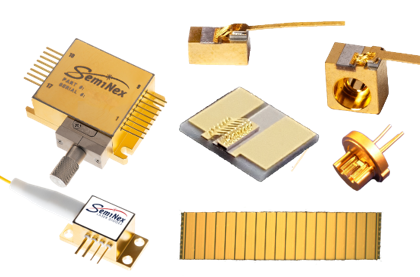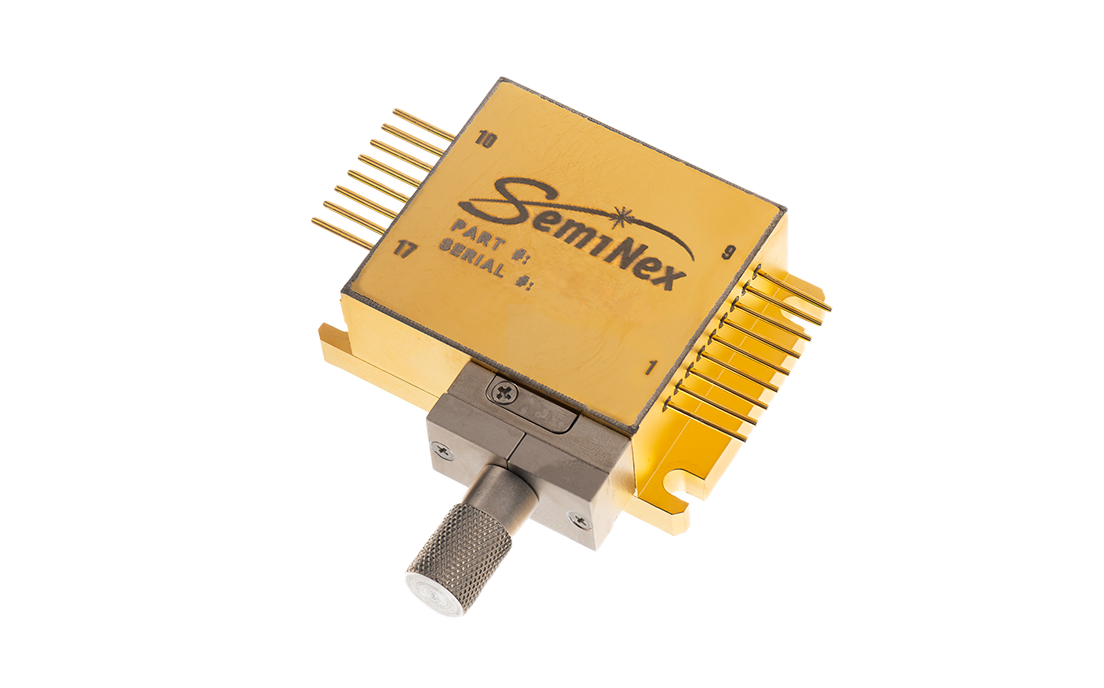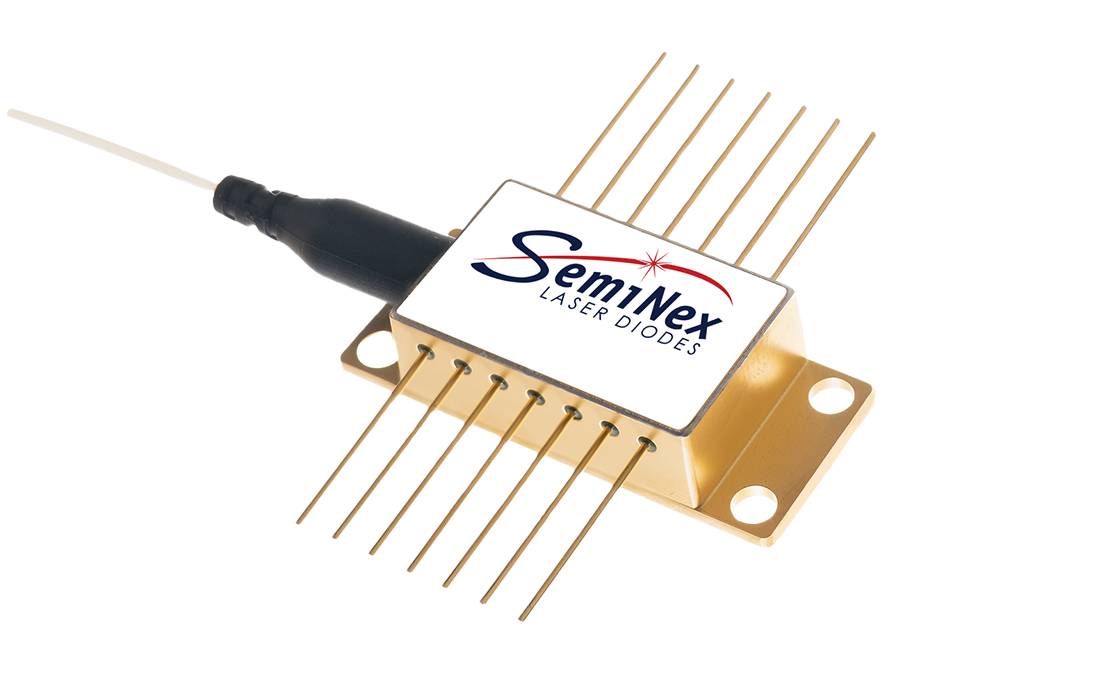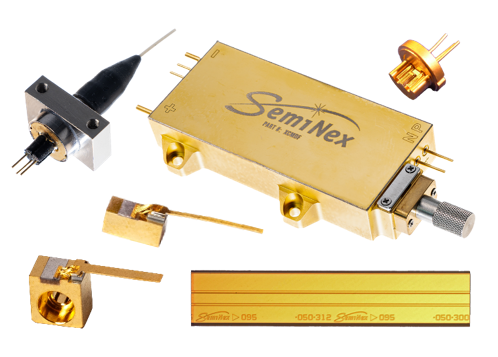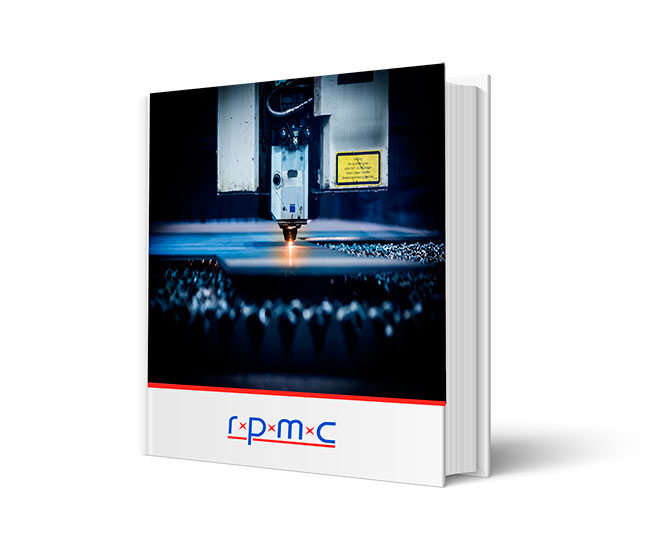SMX-MM
Laser Diode, Multimode, 1310-1940nm, up to 75W
Key Features:
- Wavelength: 1310nm to 1940nm
- Output Power: Up to 75W
- High efficiency
- Thermally stable with dynamic range
- Standard low-cost packaging
- Custom design capability
There are many different package types, wavelengths, output powers, and options to choose from. Get help selecting the right configuration for you!
POPULAR CONFIGURATIONS:
Picture |
Part Number |
Part Description |
Datasheet |
|
|---|---|---|---|---|
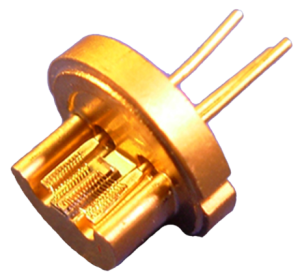
|
TO9-265-181 |
Triple Junction Laser Diode, 1550nm, 35W |
|
Get Quote |

|
TO9-267-161 |
Triple Junction Laser Diode, 1550nm, 75W QCW, 350um emitter, TO-9 package with cap |
|
Get Quote |

|
TO9-182 |
Laser Diode, 1460nm, 1.8W (14W QCW), 95µm emitter, 9mm package, No Cap |
|
Get Quote |
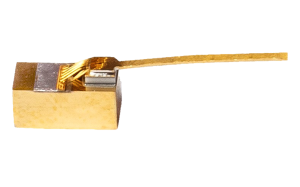
|
B-165 |
Laser Diode, 1940nm, 1.1W, 150µm emitter, B-mount package |
|
Get Quote |

|
TO9-183 |
Laser Diode, 1580nm, 1.6W, 95um emitter, TO-9 package, no cap |
|
Get Quote |
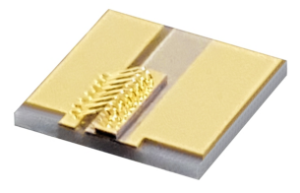
|
COC-271 |
Laser Diode, 1940nm, 1.1W, 150µm emitter, Chip on Carrier |
|
Get Quote |

|
TO9-181 |
Laser Diode, 1445nm, 1.8W (16W QCW), 95µm emitter, 9mm package, No Cap |
|
Get Quote |
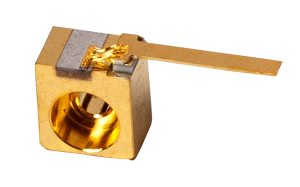
|
C-156 |
Laser Diode, 1940nm, 1.1W, 150µm emitter, C-mount package |
|
Get Quote |

|
B-104 |
Laser Diode, 1450nm, 5W (15W QCW), 95µm emitter, B-mount package |
|
Get Quote |
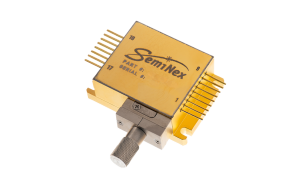
|
4CM-111 |
Laser Diode, 1310nm, 21W, Fiber Coupled 8-pin 4 Chip Module package, 400µm, 0.22NA, 1m long fiber w/ SMA connector, PD, Thermistor, Aiming beam |
|
Get Quote |

|
B-106 |
Laser Diode, 1470nm, 5W (15000mW QCW), 95µm emitter, B-mount package |
|
Get Quote |

|
TO9-149-115 |
Laser Diode, 1550nm, 30W QCW, 350um emitter, TO-9 package with cap and FAC, <5mrad |
|
Get Quote |
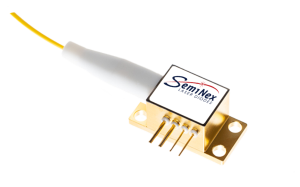
|
4PN-116 |
Laser Diode, 1320nm, 4.5W (14100mW QCW), Fiber Coupled 4-pin Module package, 105µm, 0.22NA or 0.15NA, 1m long fiber w/ SMA connector, PD |
|
Get Quote |

|
B-122 |
Laser Diode, 1470nm, 7W (21000mW QCW), 180µm emitter, B-mount package |
|
Get Quote |

|
TO9-267 |
Triple Junction Laser Diode, 1550nm, 75W QCW, 95µm emitter, 9mm package, No Cap |
|
Get Quote |
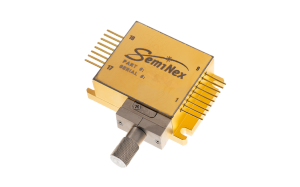
|
2CM-103 |
Laser Diode, 1460nm, 6.5W, Fiber Coupled 8-pin 2 Chip Module package, 105µm, 0.22NA, 1m long fiber w/ SMA connector, Thermistor, Aiming beam |
|
Get Quote |

|
4PN-117 |
Laser Diode, 1375nm, 4.3W (14100mW QCW), Fiber Coupled 4-pin Module package, 105µm, 0.22NA or 0.15NA, 1m long fiber w/ SMA connector, PD |
|
Get Quote |

|
TO9-266 |
Triple Junction Laser Diode, 1550nm, 52W QCW, 95µm emitter, 9mm package, No Cap |
|
Get Quote |

|
C-132 |
Laser Diode, 1650nm, 3.5W (9.6W QCW), 95µm emitter, C-mount package |
|
Get Quote |

|
TO9-121 |
Laser Diode, 1465nm, 1.8W, 95µm emitter, TO-9 package |
|
Get Quote |

|
TO9-265 |
Triple Junction Laser Diode, 1550nm, 35W QCW, 95µm emitter, 9mm package, No Cap |
|
Get Quote |

|
2CM-105 |
Laser Diode, 1470nm, 8W, Fiber Coupled 8-pin 2 Chip Module package, 200µm, 0.22NA, 1m long fiber w/ SMA connector, Thermistor, Aiming beam |
|
Get Quote |

|
B-103 |
Laser Diode, 1310nm, 5.7W (18600mW QCW), 95µm emitter, B-mount package |
|
Get Quote |

|
TO9-264 |
Triple Junction Laser Diode, 1550nm, 15W QCW, 95µm emitter, 9mm package, No Cap |
|
Get Quote |

|
4PN-134 |
Laser Diode, 1470nm, 5W, Fiber Coupled 4-pin package, 200µm, 0.22NA, 1.5m long fiber w/ SMA connector, Thermistor |
|
Get Quote |

|
B-123 |
Laser Diode, 1350nm, 5.6W (18600mW QCW), 95µm emitter, B-mount package |
|
Get Quote |
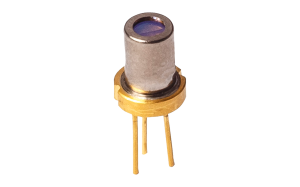
|
TO56x-267 |
Triple Junction Laser Diode, 1550nm, 75W QCW, 350µm emitter, 5.6mm package, With Cap – With Lens |
|
Get Quote |

|
4CM-104 |
Laser Diode, 1485nm, 18W, Fiber Coupled 8-pin 4 Chip Module package, 400µm, 0.22NA, 1.5m long fiber w/ SMA connector, Thermistor, PD, Aiming beam |
|
Get Quote |

|
TO56x-266 |
Triple Junction Laser Diode, 1550nm, 52W QCW, 180µm emitter, 5.6mm package, With Cap – With lens |
|
Get Quote |

|
B-134 |
Laser Diode, 1650nm, 3.2W (9.6W QCW), 95µm emitter, B-mount package |
|
Get Quote |

|
C-124 |
Laser Diode, 1380nm, 5.6W (15000mW QCW), 95µm emitter, C-mount package |
|
Get Quote |

|
C-105 |
Laser Diode, 1488nm, 7W (21W QCW), 180µm emitter, C-mount package |
|
Get Quote |

|
TO56x-265 |
Triple Junction Laser Diode, 1550nm, 35W QCW, 95µm emitter, 5.6mm package, With Cap – With lens |
|
Get Quote |

|
C-130 |
Laser Diode, 1325nm, 5.7W (15000mW QCW), 95µm emitter, C-mount package |
|
Get Quote |

|
4PN-101 |
Laser Diode, 1460nm, 4W (11400mW QCW), Fiber Coupled 4-pin Module package, 105µm, 0.22NA or 0.15NA, 1m long fiber w/ SMA connector, PD |
|
Get Quote |

|
TO56x-264 |
Triple Junction Laser Diode, 1550nm, 21W QCW, 50µm emitter, 5.6mm package, With Cap – With Lens |
|
Get Quote |

|
C-128 |
Laser Diode, 1460nm, 5W (15W QCW), 95µm emitter, C-mount package |
|
Get Quote |
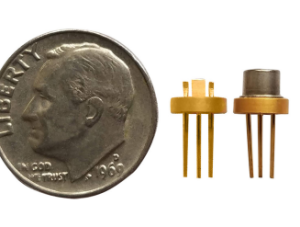
|
TO56m-302 |
Triple Junction Laser Diode, 1550nm, 8W QCW, 95µm emitter, 5.6mm package, With Cap -Mini |
|
Get Quote |

|
C-106 |
Laser Diode, 1480nm, 5W, 95µm emitter, C-mount package |
|
Get Quote |

|
TO56m-300 |
Triple Junction Laser Diode, 1550nm, 20W QCW, 180µm emitter, 5.6mm package, With Cap -Mini |
|
Get Quote |

|
4PN-104 |
Laser Diode, 1480nm, 3.8W, Fiber Coupled 4-pin package, 105µm, 0.22NA, 1.5m long fiber w/ SMA connector, PD |
|
Get Quote |

|
TO56-275 |
Triple Junction Laser Diode, 1550nm, 35W QCW, 95µm emitter, 5.6mm package, With Cap |
|
Get Quote |

|
TO9-126 |
Laser Diode, 1480nm, 1.8W, 95µm emitter, TO-9 package |
|
Get Quote |

|
TO56-267 |
Triple Junction Laser Diode, 1550nm, 75W QCW, 350µm emitter, 5.6mm package, With Cap |
|
Get Quote |

|
TO56-266 |
Triple Junction Laser Diode, 1550nm, 52W QCW, 180µm emitter, 5.6mm package, With Cap |
|
Get Quote |

|
TO9-184 |
Laser Diode, 1315nm, 2W (20000mW QCW), 95µm emitter, 9mm package, No Cap |
|
Get Quote |

|
TO56-264 |
Triple Junction Laser Diode, 1550nm, 21W QCW, 50µm emitter, 5.6mm package, With Cap |
|
Get Quote |

|
TO9-185 |
Laser Diode, 1350nm, 2.5W (19000mW QCW), 95µm emitter, 9mm package, No Cap |
|
Get Quote |

|
COC-267 |
Triple Junction Laser Diode, 1550nm, 75W QCW, 350µm emitter, Chip on Carrier |
|
Get Quote |

|
COC-266 |
Triple Junction Laser Diode, 1550nm, 52W QCW, 180µm emitter, Chip on Carrier |
|
Get Quote |

|
COC-265 |
Triple Junction Laser Diode, 1550nm, 35W QCW, 95µm emitter, Chip on Carrier |
|
Get Quote |

|
COC-264 |
Triple Junction Laser Diode, 1550nm, 20W QCW, 50µm emitter, Chip on Carrier |
|
Get Quote |

|
TO9-149 |
Laser Diode, 1580nm, 2.2W (30W QCW), 350µm emitter, 9mm package, No Cap |
|
Get Quote |

|
TO9-148 |
Laser Diode, 1575nm, 1.8W (24W QCW), 180µm emitter, 9mm package, No Cap |
|
Get Quote |

|
TO9-133 |
Laser Diode, 1550nm, 1.3W (14W QCW), 95µm emitter, 9mm package, No Cap |
|
Get Quote |

|
TO9-117 |
Laser Diode, 1590nm, 1.6W (9W QCW), 50µm emitter, 9mm package, No Cap |
|
Get Quote |

|
TO9-116 |
Laser Diode, 1575nm, 1.6W (14W QCW), 95µm emitter, 9mm package, No Cap |
|
Get Quote |

|
TO56-201 |
Laser Diode, 1550nm, 500mW (9W QCW), 50µm emitter, 5.6mm package, With Cap |
|
Get Quote |

|
TO56-114 |
Laser Diode, 1550nm, 19W QCW, 95µm emitter, 5.6mm package, With Cap |
|
Get Quote |

|
TO56-104 |
Laser Diode, 1550nm, 2.2W (27W QCW), 350µm emitter, 5.6mm package, With Cap |
|
Get Quote |

|
TO56-103 |
Laser Diode, 1550nm, 300mW (24W QCW), 180µm emitter, 5.6mm package, With Cap |
|
Get Quote |

|
TO56-102 |
Laser Diode, 1550nm, 950mW (14W QCW), 95µm emitter, 5.6mm package, With Cap |
|
Get Quote |

|
COC-107 |
Laser Diode, 1585nm, 2.2W (14W QCW), 95µm emitter, Chip on Carrier |
|
Get Quote |

|
COC-106 |
Laser Diode, 1585nm, 2.8W (24W QCW), 180µm emitter, Chip on Carrier |
|
Get Quote |

|
COC-105 |
Laser Diode, 1550nm, 2.2W (9W QCW), 50µm emitter, Chip on Carrier |
|
Get Quote |

|
COC-101 |
Laser Diode, 1550nm, 6.5W (30W QCW), 350µm emitter, Chip on Carrier |
|
Get Quote |

|
B-118 |
Laser Diode, 1550nm, 4.2W (13.5W QCW), 95µm emitter, B-mount package |
|
Get Quote |

|
4CM-107 |
Laser Diode, 1580nm, 16W, Fiber Coupled 8-pin 4 Chip Module package, 400µm, 0.22NA, 1m long fiber w/ SMA connector, PD, Thermistor, Aiming beam |
|
Get Quote |
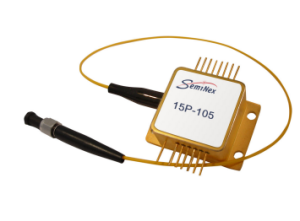
|
15P-103 w/AB |
Laser Diode, 1550nm, 4.9W, Fiber Coupled 15-pin Butterfly package, 200µm, 0.22NA, 1m long fiber w/ SMA905 connector, PD, Thermistor, Aiming beam |
|
Get Quote |

|
15P-103 w/AB & TEC |
Laser Diode, 1550nm, 4.9W, Fiber Coupled 15-pin Butterfly package, 200µm, 0.22NA, 1m long fiber w/ SMA905 connector, PD, Thermistor, Aiming beam, TEC |
|
Get Quote |

|
4PN-108 |
Laser Diode, 1550nm, 3.3W, Fiber Coupled 4-pin package, 105µm, 0.22NA, 1.5m long fiber w/ SMA connector, PD |
|
Get Quote |

|
TO9-118 |
Laser Diode, 1550nm, 1.6W, 95µm emitter, TO-9 package |
|
Get Quote |

|
2CM-104 |
Laser Diode, 1560nm, 5.5W, Fiber Coupled 8-pin 2 Chip Module package, 105µm, 0.22NA, 1m long fiber w/ SMA connector, Thermistor, Aiming beam |
|
Get Quote |

|
C-116 |
Laser Diode, 1565nm, 4.2W, 95µm emitter, C-mount package |
|
Get Quote |

|
TO9-105 |
Laser Diode, 1565nm, 400mW, 4µm emitter (single-mode), TO-9 package |
|
Get Quote |

|
2CM-102 |
Laser Diode, 1570nm, 7.7W, Fiber Coupled 8-pin 2 Chip Module package, 200µm, 0.22NA, 1m long fiber w/ SMA connector, Thermistor, Aiming beam |
|
Get Quote |
The SMX-MM is an American-made, high-power, thermally stable, cost-effective multimode laser diode. It is available at wavelengths from 1310nm to 1940nm making it perfect for medical, military, aerospace, LIDAR, free-space communications, and more! With a patented EPI structure, low-cost packaging, ISO-certified supply chain with full lifecycle traceability, focus on ease of integration, and custom design capabilities, this laser diode family is an excellent choice for reliable, high-power InP devices. We deliver the highest available power at infrared wavelengths, and when necessary, we will further optimize the design of our lasers to meet our customers’ specific optical and electrical performance needs. We have several standard packages and configurations available, as well as customization options. If you do not see exactly what you are looking for, let us know! We may have a standard product that suits your needs. However, we have many options to tailor a solution that fits your specifications. Diodes, bars, and packages are tested to meet customer and market performance demands.
Dr. Sidi Aboujja Presents Technical Talks on Latest SOA and Triple Junction Products at SPIE DCS
Product Range:
Unmounted Package Types:
| Chip | Bar |
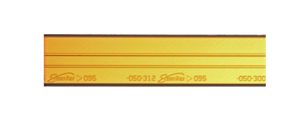 |
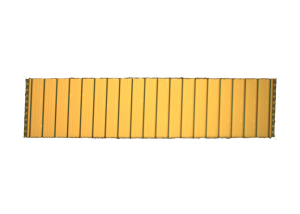 |
Free-Space Package Types:
| B-Mount Package | C-Mount Package | COC Package | TO-9 Package | TO-56 Package |
 |
 |
 |
 |
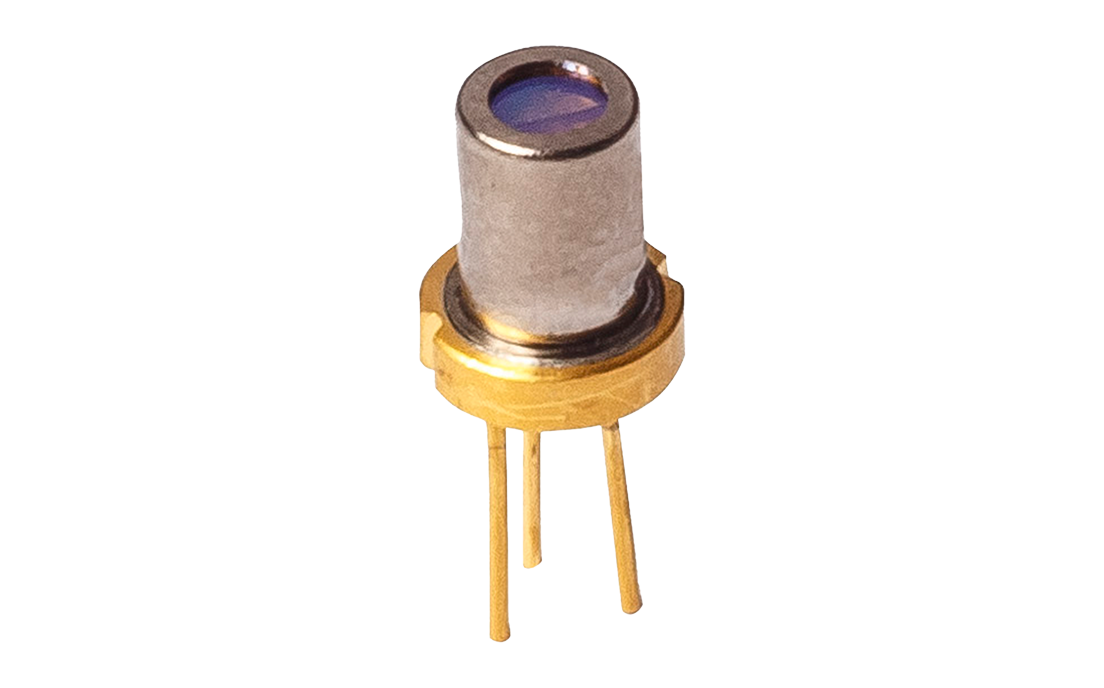 |
Free-Space Options:
Optional attachments:
- Optical Isolator
- Internal TEC
- Thermistor
Junction options:
- Single Junction
- Triple Junction
Lensing Options
- Best Collimation FAC Lens
- Squared Beam FAC Lens
Fiber-Coupled Package Types:
Fiber Core Diameters Options
Fiber core size is dependent on package and fiber type.
| 95um | 105um | 200um | 400um |
Fiber-Coupled Options:
Optional attachments:
- Optical Isolator
- Internal TEC
- Thermistor
- Aiming Beam
Connector Options
- FC/PC Connector
- FC/APC Connector
- SMA Connector
Benefits:
- Cost-Effective: standard, low-cost packaging, ideal for high-volume professional and consumer needs
- High Performance: high output power, high dynamic range, and high efficiency get you the performance you need while conserving energy and extending lifetimes
- Thermal Stability: excellent performance over temperature range and heat resistance for consistent and reliable operation with the highest powers, even in industrial and automotive applications
- “Eye-Safe” Wavelengths: SWIR wavelengths beyond 1400nm are considered retina-safe, as they transmit well through air and glass, but are readily absorbed by water (cornea)
- Patented EPI Structure: High-power with single and triple-junction at elevated temperatures, ensuring consistent performance and reliability
- Technology Integration: Low-cost packages for optical, mechanical, and electrical components, simplifying assembly, reducing costs, and enhancing reliability
- Qualified Supply Chain: Rapid scaling for timely volume production, with full lifecycle traceability and ISO certification at every level of the supply chain
- Custom Design Capability: Tailored solutions, built to your specifications, when a standard solution may not suffice. Tell us what you need!
If you have any questions or need more information, please contact us.
| Wavelength (nm) | |
|---|---|
| Description | |
| Type | "Eye Safe", Single Emitter, Triple-Junction, Fiber-Coupled, Made in the USA |

 BUY NOW
BUY NOW 
